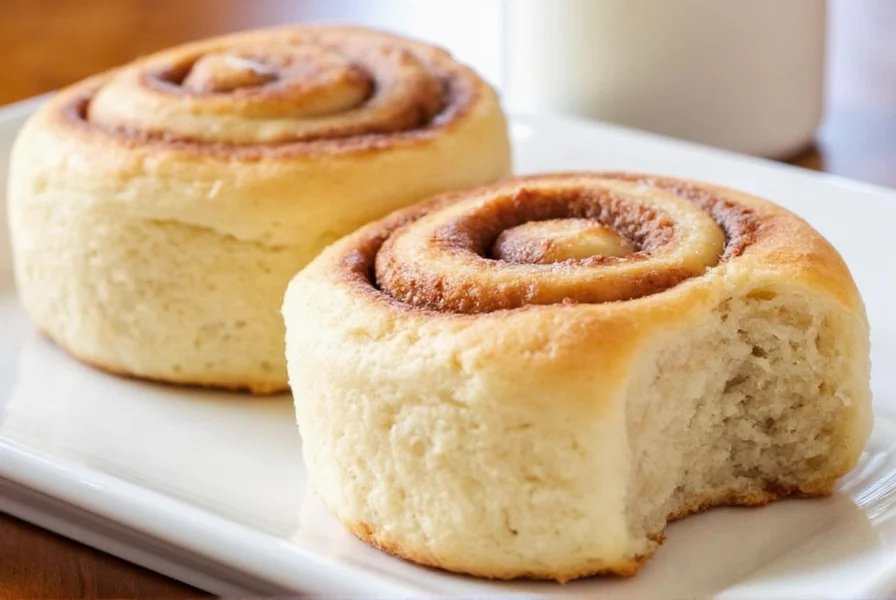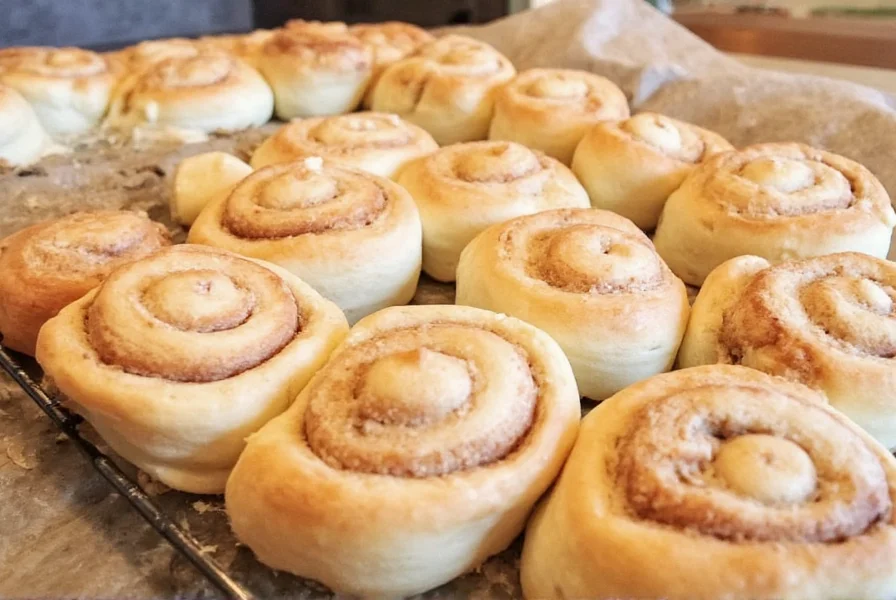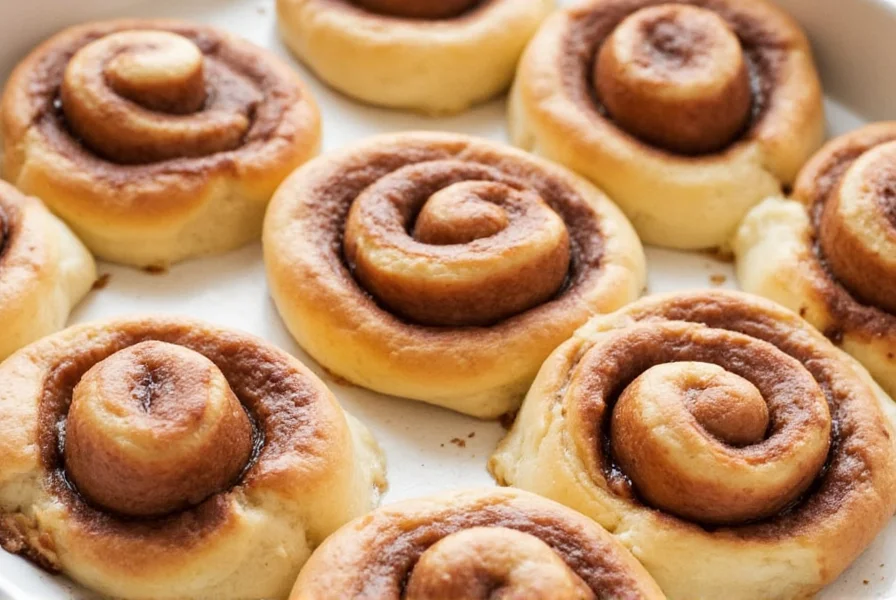The absolute best cinnamon rolls feature a perfectly balanced combination of light, airy dough, a generously spiced cinnamon-sugar filling with just the right sweetness, and a smooth cream cheese icing that complements without overwhelming. Key elements include using high-quality Saigon cinnamon for its bold flavor, proper dough hydration for optimal texture, adequate proofing time for maximum rise, and a precise baking temperature to achieve golden perfection without drying out the rolls.
Creating truly exceptional cinnamon rolls isn't just about following a recipe—it's understanding the science behind each component. After decades of perfecting this classic treat, professional bakers agree that the difference between good and great cinnamon rolls comes down to specific techniques and ingredient choices that most home recipes overlook.
Essential Ingredients for Perfect Cinnamon Rolls
The foundation of great cinnamon rolls starts with selecting the right ingredients. Not all cinnamon is created equal—Saigon cinnamon contains higher levels of cinnamaldehyde, giving it a more intense, complex flavor compared to the more common Cassia variety. For the dough, bread flour provides the ideal gluten structure for that signature pull-apart texture, while instant yeast ensures consistent rising without needing activation.
When making homemade cinnamon rolls from scratch, the quality of your butter matters significantly. European-style butter with higher fat content (82-84%) creates flakier layers and richer flavor. For the filling, a combination of light brown sugar and granulated sugar provides both moisture and structure, while heavy cream in the icing creates that luxurious mouthfeel that sets apart the best cinnamon roll recipes.
Step-by-Step Guide to Baking Great Cinnamon Rolls
Follow these professional techniques to elevate your cinnamon roll game:
Dough Preparation Secrets
Start by warming your milk to exactly 110°F (43°C)—too hot will kill the yeast, too cold won't activate it properly. Mix the yeast with a pinch of sugar and let it bloom for 5-7 minutes until foamy. When combining dry and wet ingredients, resist the urge to add extra flour; great cinnamon roll dough should be slightly sticky. Knead just until smooth and elastic (about 8 minutes in a stand mixer), as over-kneading develops too much gluten.

Filling Application Technique
After the first rise, roll your dough into a 16x12 inch rectangle. Spread softened butter evenly to the edges—this creates steam pockets during baking that separate the layers. Mix your cinnamon-sugar filling with a tablespoon of flour to prevent it from sinking to the bottom during baking. Sprinkle evenly, leaving a small border along one long edge to seal the roll properly.
Rolling and Cutting for Optimal Results
Roll the dough tightly from the filled edge, using the parchment to help lift and tighten. Seal the seam by pinching gently. For clean cuts that won't squish your rolls, use unflavored dental floss or a sharp serrated knife. Space rolls at least 1 inch apart in your baking pan to allow for proper expansion during the second rise.
Common Cinnamon Roll Problems and Solutions
Even experienced bakers encounter issues with cinnamon rolls. Here's how to troubleshoot the most frequent problems:
| Problem | Causes | Solutions |
|---|---|---|
| Dense, heavy rolls | Over-kneading, insufficient rise time, too much flour | Reduce kneading time, ensure proper proofing environment (80-85°F), measure flour by weight |
| Filling leaks out | Too much filling, insufficient sealing, dough too thin | Use recommended filling ratio, leave border when rolling, maintain proper dough thickness |
| Burnt bottoms | Oven temperature too high, dark pan | Use light-colored pan, reduce oven temp by 25°F, place pan on middle rack |
| Dry texture | Overbaking, insufficient fat in dough | Check for doneness at minimum time, use proper butter ratio, don't overbake |
Advanced Techniques for Next-Level Cinnamon Rolls
Once you've mastered the basics of making soft cinnamon rolls, consider these professional enhancements:
- Overnight proofing: Refrigerate shaped rolls for 8-12 hours for more complex flavor development
- Infused fillings: Add orange zest to your butter or mix in toasted pecans for texture variation
- Icing variations: Incorporate bourbon or espresso for sophisticated flavor profiles in your perfect cinnamon roll icing
- Temperature control: Bake at 325°F instead of 350°F for more even cooking throughout

Storage and Reheating for Maximum Freshness
Great cinnamon rolls maintain their quality when stored properly. Cool completely before covering with plastic wrap directly touching the icing to prevent drying. For short-term storage (2-3 days), keep at room temperature. For longer storage, freeze individual rolls on a baking sheet before transferring to airtight containers.
When reheating, avoid the microwave which creates uneven texture. Instead, place rolls on a baking sheet and warm in a 300°F oven for 8-10 minutes, or cover with a damp paper towel and use 50% microwave power in 15-second intervals. For frozen rolls, thaw overnight in the refrigerator before reheating.
Why Your Cinnamon Rolls Might Not Rise Properly
Understanding yeast behavior is crucial for achieving that ideal fluffy texture. Yeast becomes dormant below 70°F and dies above 130°F. The ideal proofing environment is 80-85°F with moderate humidity. If your kitchen is too cold, create a proofing box by placing the dough in your oven with just the light on. Never place rising dough near direct heat sources, which can kill the yeast on one side while leaving the other under-proofed.
FAQs About Making Great Cinnamon Rolls
What's the best cinnamon variety for baking cinnamon rolls?
Saigon cinnamon provides the most robust flavor for cinnamon rolls due to its higher cinnamaldehyde content (2-3% compared to 1-2% in Cassia). Its sweet, spicy notes with subtle citrus undertones create a more complex flavor profile that stands up well to baking. Avoid Chinese cinnamon (Cassia) if possible, as it has a harsher, more medicinal taste that can dominate the delicate balance of flavors in great cinnamon rolls.
How can I prevent my cinnamon roll filling from sinking to the bottom?
To prevent filling leakage, mix one tablespoon of flour with your cinnamon-sugar mixture. The flour absorbs excess moisture during baking, helping the filling stay in place. Additionally, don't overfill your rolls—use approximately 1/3 cup of filling for a standard 9x13 inch pan of rolls. Leaving a small border (about 1/2 inch) along one long edge when rolling helps create a proper seal that contains the filling during baking.
Why do my homemade cinnamon rolls turn out dense instead of light and fluffy?
Dense cinnamon rolls typically result from one of three issues: over-kneading the dough (which develops too much gluten), using too much flour (especially if measured by volume instead of weight), or insufficient proofing time. Measure your flour by weight (120-125g per cup) for accuracy, knead only until the dough is smooth and elastic (about 8 minutes in a stand mixer), and ensure your dough doubles in size during both rises. The ideal proofing environment is 80-85°F with moderate humidity.
Can I make great cinnamon rolls without a stand mixer?
Absolutely. While a stand mixer makes the process easier, you can achieve excellent results by hand. Mix the dough until it comes together, then turn it out onto a lightly floured surface. Knead for 10-12 minutes, using the heel of your hand to push the dough away from you, then fold and rotate. The dough is ready when it passes the windowpane test—you can stretch a small piece thin enough to see light through it without tearing. Hand-kneaded dough often develops better flavor due to the slower gluten development.
How do I know when my cinnamon rolls are perfectly baked?
Perfectly baked cinnamon rolls should register 190°F internally when checked with an instant-read thermometer. Visually, they'll be golden brown on top with slightly caramelized edges where the filling has seeped out. The centers should spring back immediately when gently pressed. Avoid the common mistake of underbaking to keep them soft—this actually creates a gummy texture. For best results, rotate the pan halfway through baking to ensure even cooking, and remember that rolls continue to cook slightly from residual heat after removal from the oven.











 浙公网安备
33010002000092号
浙公网安备
33010002000092号 浙B2-20120091-4
浙B2-20120091-4